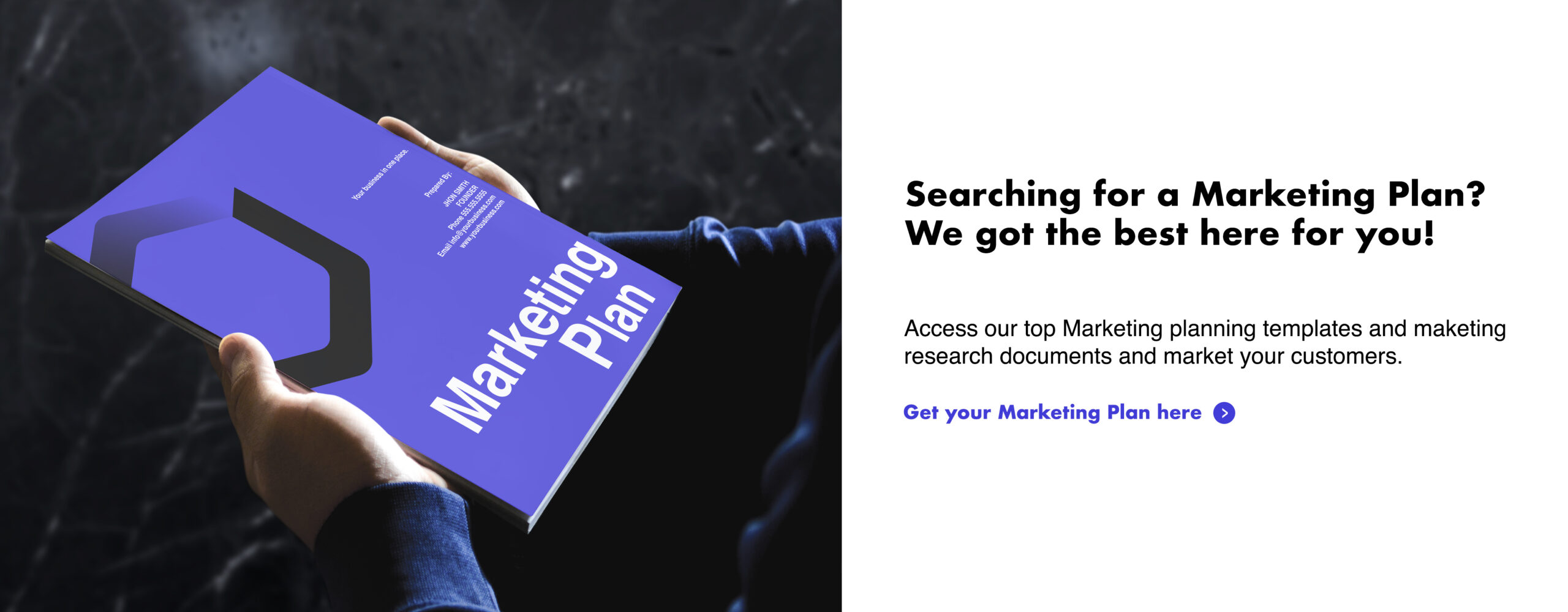
Every business needs a reliable plan.
Hopefully, you’d never dream of stampeding into business without one. And yet, surprisingly, many of us aren’t putting in nearly the same effort when it comes to building a strong marketing plan.
Here’s how to create your own killer marketing strategy.
What’s the point of investing your time and money into creating a new business only to discover that you have no customers?
This isn’t Field of Dreams, where you build it and they will come. (OK, so the line is actually, “If you build it, he will come,” but you know what I mean. The whole team showed up eventually. If you have no idea what I’m talking about, it’s a classic, look it up.
Finding new customers is an active task. You’re going to have to get out there, find them, and let them know you exist. And the only way to do that is by developing a solid marketing strategy.
Without one, your company runs the risk of becoming directionless, wasting money on channels that aren’t bringing you results, and losing out on potential customers to your competitors. And even more importantly, you’re missing the chance to create a deeper understanding of your customer base.
Thankfully, it’s not too hard to come up with your own effective marketing strategy. Here are the five steps you need, to create one that works for you.
1. Know your target customer
The first step in building your marketing strategy is to know who it is you’re marketing to and what their core drivers are. Doing so ensures that your marketing efforts are focused, and you’ll benefit by getting the return on investment that you’re after.
One common way to go about this is to create a buyer persona. By creating effective buyer personas, you can be sure that you’re marketing to people who are actually interested in what you have to offer. Otherwise, your marketing strategy is pretty much the equivalent of a man on a box yelling through a megaphone at random people on the street.
Think about what you’d like your ideal customer to look like. Start getting granular, and create a list of demographics which your customer falls into, including location, age, gender, and so forth. But don’t stop there. You’re after a nuanced, in-depth picture of your customers (aim to know them better than they know themselves!)
Harvard Business Review recommends visualizing your customers by asking incisive questions regarding behaviors and motivations, while also creating a summary statement from the persona’s perspective.
Examples of such questions include:
- Expectations: What type of experience do they expect?
- Buying Motivation: Why are they buying your product?
- Buying Concerns: What concerns might they have when buying your product?
As you can see, weaving buyer personas into your marketing strategy is a highly effective means of increasing your empathetic understanding of your target customers. You need to know them as if they were a close, personal friend you’d have deep and meaningful conversations with.
However, as you’ll probably know from interactions with your own friends, people are always full of surprises. One of the biggest mistakes you can make when creating a buyer persona is to constantly make assumptions.
Hit the pavement, start interviewing people, and get some real data by putting these personas to the test.
The easiest way to start defining your buyer persona is by utilizing whatever current customers you might have. Ask them for 10 minutes of their time for an interview, or send out a simple survey. Interview people who aren’t even your customers yet, especially those who fit the profile of your target customer.
Your goal should be to find out what people are really thinking when they interact with your business. Ask lots of open-ended questions, and find a way to incentivize people to do interviews with you. A great option would be to offer them a discount or free product, as it also continues to build those personal relationships.
It’s tempting to gloss over buyer personas. And it’s certainly easy to think you’ve nailed them. However, generally speaking, the more time you spend developing them, the more effective your overall marketing strategy will be.
Once you know what your target customer is all about, it’s time to move on to the next step of building your business marketing strategy.
2. Research your competitors
No business exists in a vacuum.
Even if you are the only brand on the market, in a very specific niche, you can be guaranteed that sooner or later you’re going to find yourself with some competition. And guess what? They’ll likely possess their own ideas about the best way to acquire customers.
It’s important to spend some time doing marketing research on your competition.
Before you get the wrong idea, the point of running a competitor analysis is to help you figure out the things you can be doing better or differently than the rest of the crowd.
Study your competitors not so you can replicate their every move, but rather so you can find out what’s working for them (and do it better) and uncover untapped opportunities.
You’ll also want to do a deep dive into your competitor’s social media accounts. Don’t just scan them every now and then, actively watch and understand the patterns and tactics they’re using. What’s succeeding for them?
In reality, unless you happen to have a really good relationship with someone else in your niche and can convince them to discuss your marketing strategy, you’re going to have to dust off that deerstalker hat and do a little sleuthing (unleash your inner Sherlock Holmes).
Where should you start? Well, to get an initial grasp of the marketing channels your competitors are using, try reaching out directly to their customers and find out what they’re saying.
Tap into those conversations. You’ll find a whole host of interesting things to examine. For example, the products people are purchasing, how they found out about them, the promotions and deals on offer, and whether their experiences have been positive or negative.
That last point is crucial. Negative experiences lead to roughly 59% of all customers walking away and likely to never return. That’s where your opportunity exists. Be curious and figure out how to offer something better.
The final method I’d recommend is to simply sign up to their email list and see what their email marketing strategy is like. Not only will this give you an invaluable look into their email advertising efforts, but it’ll also give you an up-close and personal view of their overall plan.
For example, you can find out if they’re doing a product launch, and if so, how they go about it. Or if they’re hyping up interest for a similar product to yours. Get into the belly of the beast and find out what’s going on.
Of course, there are also dozens of other methods including positioning maps which are great for conducting quality competitor research. But these ideas should give you a good notion of where to start with your own.
3. Choose your channels
How do you get your marketing message in front of your prospects? There are many ways, more than ever, in fact. You could go down the traditional advertising route and stick ads in newspapers and on billboards, or you can try more modern and ever-evolving tactics like SEO and content marketing.
Whatever route you head down, figure out what channels you’ll be using in order to turn your audience into prospects and then into customers. While it might be tempting to try everything at once and go for a “scattergun” kind of approach, all you’ll do is waste precious resources on channels that aren’t guaranteed to work.
Therefore, in order to get the return on investment you want from your new marketing strategy, it’s important to make deliberate, informed decisions about those channels providing the best ways to reach your target customers.
Remember, don’t invest effort into a particular channel just because you feel like you should be using it. It will take a little bit of time and experimentation to find the right marketing channel for you. So don’t stress if you don’t get it right from the get-go.
The best approach to figuring out the optimal channels for your strategy is to first break down all of your potential channels into three sections: owned, earned, and paid media.
It’s best to think of these three different types of media as three legs of a stool. Each type plays an important role in your digital marketing strategy, and all three are required to work together in order to cover all your marketing bases.
A good general rule of thumb is to follow the ratio of 2:1:1 when you’re creating a marketing strategy:
- Two owned media channels
- One earned media channel
- One paid media channel
Let’s talk about each one in a little bit more depth.
READ MORE: Strategic Email Marketing for Administrative Services Businesses
Owned Media
Owned media are the channels that you have full control over, including your email list, website, or blog. In basic terms, any branded content that you produce yourself can be considered owned media.
These channels are particularly attractive as they offer greater control, timeliness, and demonstration of personality, and are highly cost-efficient.
More than anything, acquiring two channels of owned media is preferable because it allows you to remove any reliance on somebody else’s platform in order to promote your brand. Greater freedom means greater flexibility. Focusing on these channels will facilitate those all-important deeper relationships with your customer.
They should form the backbone of your digital marketing strategy.
This is why, at Foundr, we put a ton of effort into building our email list and growing our Instagram followers. These are channels we have complete control over, which reach our target audience and generate the majority of our leads and sales.
Figure out which two owned media channels you want to focus on the building when it comes to your own marketing strategy.
Earned Media
Earned media refers to the exposure your content receives organically through outside sources. Think of things like guest posts on other sites, your SEO efforts, or any coverage you receive from the press.
Earned media essentially taps into word-of-mouth marketing. You’re promoting your content through other publications and using their influence to reach your target customer. Placing emphasis here makes sense, as customers generally trust these sources much more.
Put it this way, you’re much more likely to trust the word of a friend over a television commercial when making a purchasing decision.
Whether it’s focusing on building partnerships with influencers, or looking to build your own level of influence through guest posts, identify at least one earned media channel you can use to reach your audience.
Unsurprisingly, paid media is any media that you pay for. Think of things like Google Adwords, Facebook ads, sponsored updates on Twitter, or Instagram. This also includes traditional mediums such as TV or radio commercials and print advertising.
READ MORE: How to Create a Marketing Plan In 2021 (Outline + Examples)
Paid Media
Paid media is an effective mechanism for generating more exposure towards your owned media and winning more earned media. While you have a certain amount of control with paid, be cautious. Make sure you don’t fall into the trap of continuously throwing money at it, especially if it’s not generating the results you want.
The best way to find the paid media channel that works for you is to set yourself a budget and try different platforms at once. After a couple weeks of testing, see what’s working best and double down on that particular channel.
Now, let’s discuss the relationship between sales and marketing strategy.
4. Break down your sales funnel
A great way to help you flesh out the details of your marketing strategy and figure out which marketing tactics and channels are right for you is to do a quick breakdown of your sales funnel.
At its most basic form, every sales funnel follows the AIDA format of “Attention, Interest, Desire, and Action.”
At the top end, you have your cold leads. People who are completely unaware of your brand’s existence, and you want to figure out how to grab their awareness and interest.
Once you do, you’ll need to figure out a way to turn them into hot leads by generating a sense of desire. And finally, you’ll capitalize on that desire by asking them to perform a specific action, whether it’s subscribing to your email list or purchasing a product.
It’s critical to break down each channel you’ve chosen to focus your attention on in your marketing strategy, and map out your customer’s journey throughout your sales funnel. By breaking down your customer’s journey in different stages, you can identify the weakest points which need some attention.
This, in turn, allows you to analyze if there’s anything you can improve upon to ensure you’re moving those leads into the final action stage. This exercise can be extremely helpful when you’re trying to figure out what marketing tactics you want to use and where to implement them.
5. Create SMART marketing goals
Armed with an understanding of the bare bones of your marketing strategy, let’s finish by figuring out what success means to you.
It’s all well and good to say that you want more exposure, or that you want more customers… but you’ll need to define your goals a little more narrowly than that. How can you tell that your marketing strategy is working if you don’t know, exactly, what success is in the first place?
I’ll show you what I mean.
Here are some examples of poorly defined goals:
- I want to rank number one on Google
- I want a bigger email list
- I want more awareness of my product launch.
These goals aren’t ideal. Where are the timeframe, the specificity, and the actionable steps? Worst of all, there’s no way to track or measure these goals.
To get over this pitfall, focus on creating SMART marketing goals. These goals are specific, measurable, actionable, relevant, and timely.
By having SMART goals in place, you can make sure that your marketing goals align directly with your business goals. They’re easy to follow, your whole team can get behind them, and instead of relying on your gut, you now have definitive metrics to track the success of your marketing strategy.
This means creating marketing goals that look more like this:
- I want to grow my mailing list to 50,000 subscribers by the end of the year
- I want to create rank number one for the keyword “entrepreneur” by 2018
- I want to track and measure the number of downloads and sales I receive from a series of downloadable e-books over a period of three months
By creating goals like these, your marketing strategy will improve from a tighter focus and will be on the right track at all times. It’ll also clarify whether or not your tactics are working or if you possibly need to change and adjust your strategy.
Ready To Build and Execute Your Marketing Strategy?
There you have it. Your whole process to develop a killer, effective marketing strategy.
Building a solid marketing strategy is essential if you want your business to succeed. No matter how great your product or service is, if no one knows about it, you’re not going to post those winning sales numbers. Customers don’t just magically turn up out of the blue, you have to earn the right for their attention.
Once you’ve finished making your marketing strategy, which could take as little as a day or even months of constant revising, you’ll benefit by having a clear idea of the direction to move in. However, remember that the competitive landscape is constantly shifting. By actively revising your marketing strategy over time, your business will continue to reap greater rewards.
SOURCE: Foundr.com

























